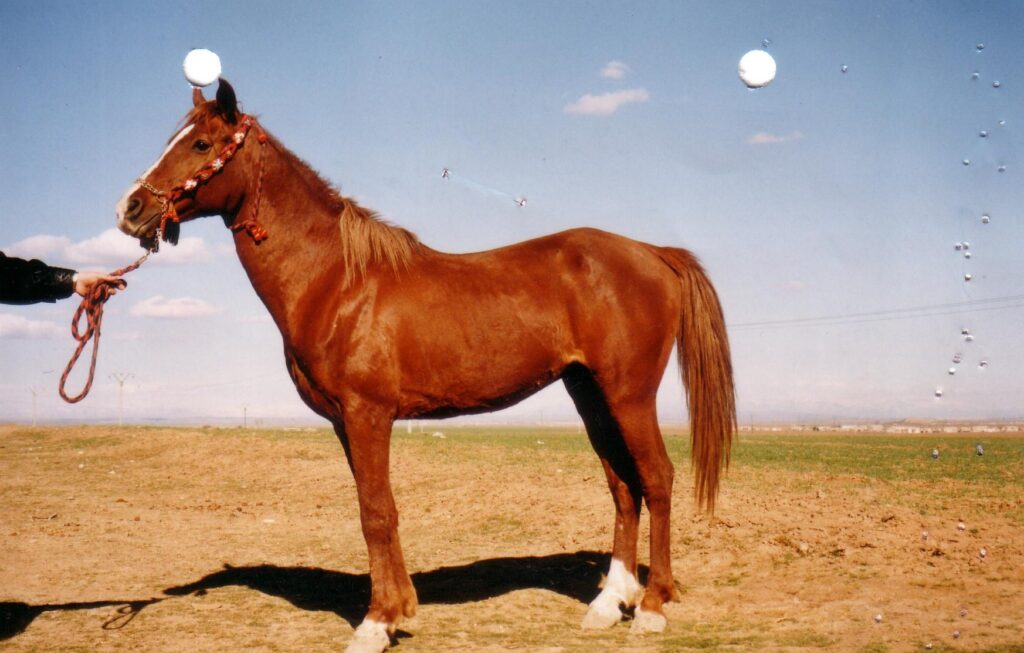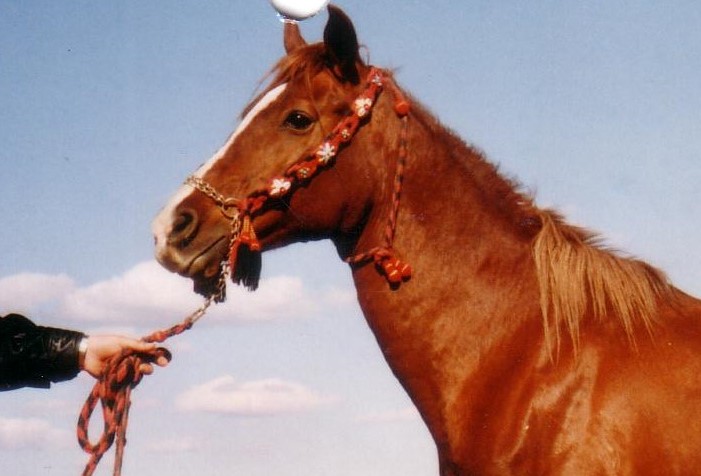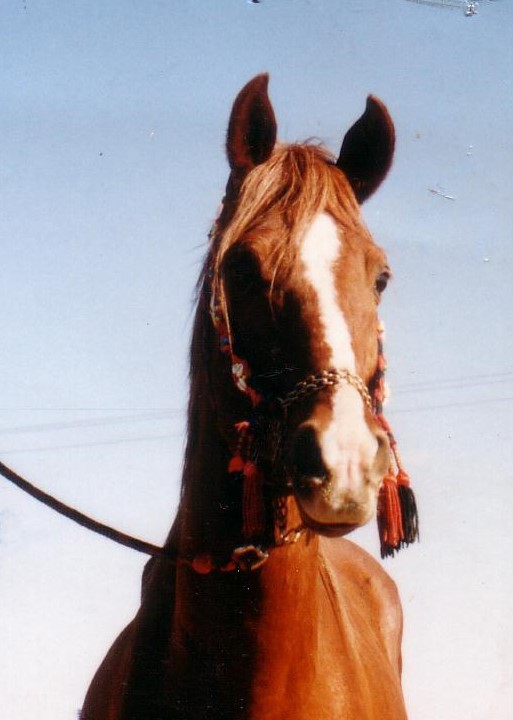Mash-hur, desert-bred Shammar herdsire
For much of the 2000s, the chestnut Saqlawi Sh’aifi stallion Mash-hur Shammar was herd sire in the desert stud of the paramount Shaykh of the Northern Shammar, Dham Ahmad al-Dham al-Jarba.
I never saw him in real life but the three photos below provide a good idea of what a desert-bred stallion looks like well into the XXIst century. I am especially taken by the resemblance with wild desert creatures, bird, gazelle or fox. The eye sockets, the jowls, the lower lip and the long nostrils stand out.



The story of his line is fascinating. Sometime in the 1980s, a tribal dispute broke out between the ‘abid, descendants of the slaves of the Jarba shaykhs of the Shammar, and a Shammari man of the Bsaylan clan, during which a mare of the Bsaylan was shot and killed.
The Jarba shaykhs stepped in to resolve the dispute, as they are legally responsible for the actions of their ‘abid in Bedouin tribal law. One of the shaykhs offered to give a mare to the Bsaylan clan as compensation for the one they had lost. He sent one of his men to Khleif ibn Bisra, to buy a three year old mare from the Saqlawi Sha’ifi marbat known after Ibn Bisra. She was a daughter of Ibn Bisra’s chestnut Saqlawi Sha’ifi stallion. The Bsaylan having rejected the settlement offer, the shaykh got to keep the mare. He bred her to his own Saqlawi Jadran stallion Sarukh (‘rocket’ in Arabic). She foaled a bay filly with a star, named Hujaylah. By then the Bsaylan had agreed to settled and received the filly Hujaylah as compensation, instead of her dam. The Bsaylan bred Hujaylah to the black Kuhaylan al-Wati stallion of Fawaz al-Hakim al-Ghisham, who owns this marbat. She foaled a chestnut colt, which the paramount Shaykh of the Shammar purchased and named Mash-hur (“famous”) Shammar when he reconstituted his stud.
Really nice. He has a topline similar to Hilmyeh.
He looks very much like a doing horse, and I really like the fact that his legs and feet appear to be solid and strong. Looks like a good length of hip as well, and I am a sucker for bright chestnuts with blazes like that.
Oh, that shoulder strikes me as a horse that can move. He gives me the impression of a horse that would move very nicely in dressage, and be wicked fun to take out full tilt boogie.
Do you know what happened to his sister after she went to the Bsaylan?
You mean his dam? I see no other offspring in the studbook. These folks did not care about registration. To them having a piece of paper in some government basement as a proof of the authenticity of their horses is just laughable. The same families owned the same lines of horses for 100, 200, sometimes 300 hundred years in a row, and the fleeting passage of a government car to take a photo, fill out a form, take a hair sample and then go back is almost a non-event.
Their point of view was and is certainly understandable, except that as a preservationist who wishes to keep these lines going: I regret it.
It seems ridiculous, a horse like this is not considered an Arabian to WAHO.
But part bred sea horses that trace to mongrels like Skowronek are. Insane.
We need a different way to register horses. The present system is archaic and basically designed for part-bred owners to get their horses branded as purebreds.
He is registered. His sisters were not.
https://www.allbreedpedigree.com/mash-hour+shammar
WAHO syrian stud-book vol 7 N°2372
Thank you Arnault. The grand-dam is from Khleif ibn Bisra, sold to Talal al-Mithqal.
The Bsaylan are also from the broader Ibn Bisra clan, I recently learned.